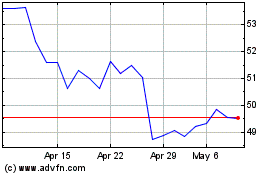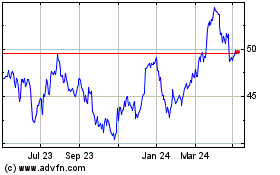Florida has a bad reputation, at least when it comes to bugs. In
a national survey, homeowners ranked Florida as the state with the
worst bug infestation problems – including ants, termites and
cockroaches. Louisiana and Texas were runners-up.
Bugs clearly are widespread across America: A whopping 90
percent of homeowners said they have experienced an insect
infestation, according to the recent telephone survey, conducted by
Infogroup | ORC, sponsored by BASF Pest Control Solutions.
When it comes to bed bugs, respondents agreed New York has the
worst problem. California and Florida were first and second
runners-up for bed bugs, respectively.
Ant infestation was rated the most common insect annoyance by
homeowners interviewed. Nearly 60 percent of those questioned said
ants were “very likely” or “somewhat likely” to infest their homes.
In contrast, about a quarter (27 percent) of respondents said they
were “likely” to suffer from a termite infestation.
“The survey findings mirror what we see in real life,” said Dr.
Bob Davis, Chief Entomologist at BASF. “Ants are pervasive
throughout the United States, while termites tend to be most
prevalent in the West, South and Southeast.”
Sales of insecticides also validate homeowners’ beliefs about
the “overall buggiest states.” Researchers compared the survey
results with sales of Termidor® termiticide/insecticide
along with sales of over-the-counter products containing
permethrin, a major ingredient in many insecticides sold at
home-improvement and hardware stores.
“What’s really impressive is that homeowners’ perceptions of the
states with the worst bug problems as shown by the survey results
are very accurate, especially with regard to the top 10,” Davis
said.
Here are the top 10 overall buggiest states, as ranked by
homeowners and confirmed by product sales data:
1. Florida 6. New York 2. Louisiana 7. Mississippi 3.
Texas 8. Alabama 4. California 9. Missouri 5. Georgia 10. South
Carolina
While they can’t necessarily be called the “least buggiest”
locales, the following ranked in the bottom 10 of the survey, in
terms of respondents’ perceptions:
50. Washington, DC 45. Delaware 49. South Dakota 44.
North Dakota 48. Connecticut 43. Illinois 47. Idaho 42. Utah 46.
New Hampshire 41. New Mexico
The survey also provided insight on the debate over “doing it
yourself” versus calling a professional. Among the 90 percent of
homeowners who have had a bug infestation, 63 percent of them tried
to treat it themselves and only 23 percent called a professional
right away. Forty-percent of those who tried to treat it themselves
had to call in a professional anyway and 86 percent of those who
called a professional reported success.
“Calling a professional pest control expert really makes a
difference when dealing with a structural infestation,” Davis said.
“Most homeowners don’t know exactly what bugs they’re dealing with
or how best to treat the structure. Pest management professionals
are equipped to deal with just about everything.”
“Homeowners need to be vigilant,” Davis cautioned. “Some species
of ants and termites are wood-destroying pests and termites alone
cause $5 billion in property damage each year. If you think your
house is infested, you need to call a pest management
professional.”
For more information about identifying bug infestations or
preventing and eradicating insects, consumers should visit
termiteinstitute.com, antinstitute.com or bedbuginstitute.com.
About the Survey
The survey was conducted among a national probability sample of
675 adults comprising 321 men and 354 women 18 years of age and
older, living in private households in the continental United
States. All respondents were homeowners. Interviews for this
telephone survey were conducted by Infogroup | ORC during the
period June 10-13, 2010. Margin of error for this survey is plus or
minus 4 percent. For purposes of the survey, when ranking “overall
buggiest” states, respondents were asked to consider ALL of the
following bugs: spiders, ants, bees/wasps, termites, cockroaches,
bed bugs.
About the Crop Protection division
With sales of €3.6 billion in 2009, BASF’s Crop Protection
division is a leader in crop protection and a strong partner to the
farming industry providing well-established and innovative
fungicides, insecticides and herbicides. Farmers use these products
and services to improve crop yields and crop quality. Other uses
include public health, structural/urban pest control, turf and
ornamental plants, vegetation management, and forestry. BASF aims
to turn knowledge rapidly into market success. The vision of BASF’s
Crop Protection division is to be the world’s leading innovator,
optimizing agricultural production, improving nutrition, and thus
enhancing the quality of life for a growing world population.
Further information can be found on the web at
www.agro.basf.com.
Follow us on Twitter: www.twitter.com/basfagro and subscribe via
RSS: www.basf.com/rss to our news feed.
BASF - The Chemical Company.
BASF Corporation, headquartered in Florham Park, New Jersey, is
the North American affiliate of BASF SE, Ludwigshafen, Germany.
BASF has approximately 16,000 employees in North America, and had
sales of $13 billion in 2009. For more information about BASF’s
North American operations, or to sign up to receive news releases
by e-mail, visit www.basf.us.
BASF is the world’s leading chemical company: The Chemical
Company. Its portfolio ranges from chemicals, plastics and
performance products to agricultural products, fine chemicals and
oil and gas. As a reliable partner, BASF creates chemistry to help
its customers in virtually all industries to be more successful.
With its high-value products and intelligent solutions, BASF plays
an important role in finding answers to global challenges, such as
climate protection, energy efficiency, nutrition and mobility. BASF
posted sales of more than €50 billion in 2009 and had
approximately 105,000 employees as of the end of the year. Further
information on BASF is available on the Internet at
www.basf.com.
A Termidor® termiticide/insecticide application can only be
performed by a licensed pest control professional.
Users must always read and follow label directions.
Termidor is not registered for termite use in the state of New
York.
©2010 BASF Corporation. All Rights Reserved.
BASF (TG:BAS)
Historical Stock Chart
From Feb 2025 to Mar 2025

BASF (TG:BAS)
Historical Stock Chart
From Mar 2024 to Mar 2025
